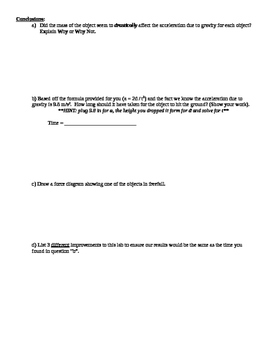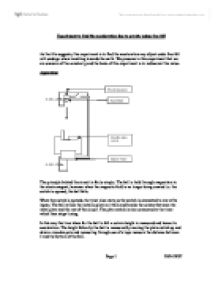
The experiment was conducted successfully and we were able to obtain a value for g (the acceleration due to gravity) and compare it with the standard.What is the magnitude of its velocity after falling 10m?.The ball leaves the thrower’s hand with a speed of 10m/s.What is the speed after falling for 1s, 2s, 3s? A student throws a ball vertically downward from the top of the building.What is the magnitude of the ball’s velocity just before it reaches the ground?.A ball is dropped from the roof of a building.
FREE FALL AND ACCELERATION DUE TO GRAVITY LAB VERIFICATION
Verification that free fall does not depend on the mass of the falling object. The same steps were repeated from part one except the height was changed to 1.0 meters and two balls of different weights were used in order to verify that the time of free falling objects do not depend on the mass of the falling objects.Įxcuse me, No problem Professor Please, get to the point, we are running out of time.These steps were carried out for several other heights: 0.5m, 0.7m, 0.9m, 1.1m, 1.3m, and 1.5m.The ball was dropped at the same distance for three times, enabling us to calculate the mean.The ball was released and the data was recorded.The distance of the free falling object was measured at 0.3m.Connection to Digital Channel one as made on the Science Workshop Interface.The steel ball was placed in the release mechanism and secured, but not yet released.The free fall pad was positioned under the release mechanism.The free fall apparatus was previously set up.



Objects acted upon only by the force of gravity are in free fall.To verify that the time of free fall does not depend on the mass of the falling object.To determine from the experiment the value for g, the acceleration due to gravity.To verify that the displacement of a freely falling body released from rest is directly proportional to the square of the elapsed time.Acceleration Due to Gravity: Free Fall By: Rosa Marie Kinder and Kenisha Marshall SC441 Honors Class, Fall 2002, Dr.


 0 kommentar(er)
0 kommentar(er)
